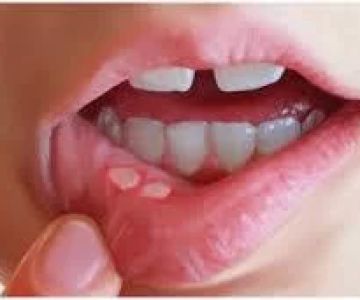The Difference Between Canker Sores and Cold Sores
Canker sores and cold sores are common oral health issues that often get confused due to their appearance and the discomfort they cause. However, they are distinctly different and understanding these differences is crucial for effective treatment and prevention. This article from Dentistry Toothtruth will explore the key differences between canker sores and cold sores, including their causes, symptoms, and treatment methods.
What Are Canker Sores?
Canker sores, also known as aphthous ulcers, are small, shallow lesions that develop on the soft tissues inside your mouth. Unlike cold sores, they do not appear on the surface of your lips and are not contagious. Canker sores usually present as round or oval white or yellow spots with a red edge. They typically occur inside the cheeks, on the tongue, or the base of the gums.
The exact cause of canker sores is unknown; however, factors such as stress, food allergies, hormonal changes, and nutritional deficiencies might trigger their occurrence. Canker sores usually heal on their own within one to two weeks and are not associated with a viral infection.
Explore more about mouth ulcers & infections on Dentistry Toothtruth
Understanding Cold Sores
Cold sores, also referred to as fever blisters, are caused by the herpes simplex virus (HSV). They appear as fluid-filled blisters on the lips and surrounding areas, including the nose and chin. Cold sores are highly contagious and can be spread through close personal contact, such as kissing or sharing utensils.
Unlike canker sores, cold sores have a distinct viral origin and are characterized by cycles of outbreaks and remissions. Stress, sunlight, or a weakened immune system may trigger outbreaks. Each outbreak typically lasts about 7-10 days, during which the blisters burst, crust over, and heal.
Learn more about oral health issues
Causes and Triggers: A Comparative View
The fundamental cause of canker sores remains largely idiopathic, though contributing factors are varied. In contrast, cold sores have a clearly defined viral cause – the herpes simplex virus. Triggers for canker sores include mechanical injuries (such as biting the inside of the mouth), certain food sensitivities, and even stress.
Cold sores, by contrast, are triggered by factors that activate the dormant HSV virus within the body. Emotional stress, fatigue, or exposure to sunlight can provoke outbreaks. Understanding these triggers is key to managing and preventing both types of sores.
Visit Dentistry Toothtruth for more information
Symptoms and Diagnosis
Canker sores usually begin with a tingling or burning sensation inside the mouth, followed by the development of painful ulcers. The lesions are often accompanied by inflammation and soreness but do not cause systemic symptoms.
In the case of cold sores, initial symptoms may include itching or tingling around the lips, progressing to blisters and oozing sores. Cold sores often come with systemic signs such as fever or swollen lymph nodes, differentiating them further from canker sores. Accurate diagnosis can often be made based on physical examination, though in some cases, additional diagnostic tests may be warranted.
Discover mouth ulcer symptoms at Dentistry Toothtruth
Treatment Options
Treatment strategies for canker sores focus on pain relief and promoting healing. Over-the-counter topical medications, mouthwashes, or nutritional supplements may be recommended. Maintaining good oral hygiene and avoiding known triggers can help manage the condition.
Cold sores require antiviral medications, especially in severe or frequent cases. Topical or oral antiviral drugs can speed up healing and reduce recurrence. In addition, avoiding known triggers and maintaining a healthy lifestyle plays a significant role in managing cold sore outbreaks.
Find out more about treatment options
Prevention and Management Tips
Preventing canker sores involves identifying and avoiding personal triggers, such as specific foods or ingredients in oral products. Incorporating a balanced diet with adequate levels of nutrients, particularly B vitamins and iron, can support oral health.
For cold sores, minimizing sun exposure, managing stress, and maintaining a strong immune system are vital preventive measures. Regular use of sunblock on lips and taking antiviral prophylactics may be advised in recurrent cases. Being aware of these factors empowers individuals to reduce occurrence and manage symptoms effectively.
Visit Dentistry Toothtruth for prevention tips
Conclusion: Understanding and Addressing Oral Sores
In summary, while canker sores and cold sores may appear similar, they are distinctly different in their origins, symptoms, and treatment needs. Awareness and understanding of these differences, as highlighted by Dentistry Toothtruth, are essential for effective management and prevention.
By following recommended treatment protocols, avoiding known triggers, and consulting healthcare providers when necessary, individuals can minimize the discomfort and potential complications associated with these oral conditions. Improving your oral healthcare routine is a proactive step towards achieving better overall health.
Explore more solutions for oral health issues on Dentistry Toothtruth




 Midwest Dental - Middleton4.0 (159 review)
Midwest Dental - Middleton4.0 (159 review) Chelmsford Family Dental5.0 (22 review)
Chelmsford Family Dental5.0 (22 review) Valleywise Community Health Center - Mesa3.0 (252 review)
Valleywise Community Health Center - Mesa3.0 (252 review) Dental Care of Brooklyn Park4.0 (183 review)
Dental Care of Brooklyn Park4.0 (183 review) Scott Soderquist, DDS, MS0.0 (0 review)
Scott Soderquist, DDS, MS0.0 (0 review) Madison Oral Surgery & Dental Implants4.0 (661 review)
Madison Oral Surgery & Dental Implants4.0 (661 review) The Importance of Oral Health Education During Pregnancy for a Healthy Pregnancy
The Importance of Oral Health Education During Pregnancy for a Healthy Pregnancy Best Tips for Brushing Your Teeth Properly for Healthy Gums: Essential Techniques for Oral Health
Best Tips for Brushing Your Teeth Properly for Healthy Gums: Essential Techniques for Oral Health Why Skipping Dental Checkups Can Lead to Bigger Oral Health Problems
Why Skipping Dental Checkups Can Lead to Bigger Oral Health Problems Advantages of Porcelain Dental Restorations
Advantages of Porcelain Dental Restorations How Can Diabetes Cause Tooth and Gum Problems? Preventing and Managing Oral Health Issues
How Can Diabetes Cause Tooth and Gum Problems? Preventing and Managing Oral Health Issues Healthy Habits for Promoting Good Oral Health and Hygiene: Tips for a Healthy Smile
Healthy Habits for Promoting Good Oral Health and Hygiene: Tips for a Healthy Smile